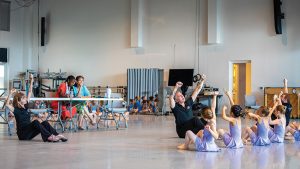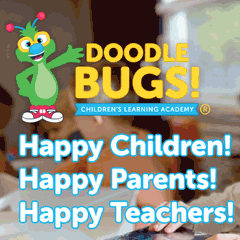Getting to the Pointe
With his professional experience in roles onstage and off, Jorden Morris’ conceptual intellect touches every aspect of the performance to cast an unforgettable and emotional impression upon the audience.

Jorden Morris became Orlando Ballet’s artistic director two years ago, and his creative capabilities continue to soar—evidenced by the three productions he showcased in his first six months.
Born in Alberta, Canada, Morris trained at the Banff Centre School of Fine Arts and Royal Winnipeg Ballet School (RWB), where he began a stage career as a lead dancer shortly after graduating. Studying choreography and theater at New York University encouraged him to choreograph and direct; he subsequently debuted his first adaptation in 1999. From then on, he continued to create rapidly, including two nationally broadcasted pieces for Queen Elizabeth II during her visit to the RWB.
Now, he brings his expertise to Central Florida’s premier professional ballet, founded in 1974, with productions year-round featured at the Dr. Phillips Center for the Performing Arts and Harriett’s Orlando Ballet Centre. Orlando Family Magazine spoke with Morris to learn more about his fascinating past and what to anticipate from Orlando Ballet.
How did you first discover your passion for the arts?
Oh, that was a long time ago. [laughs] I was a very avid gymnastic student when I was younger, and our coaches told us that we should go take a ballet class for flexibility and coordination and things like that. So a couple of us went to the Banff Centre of Fine Arts and we took a ballet class. And that was where I fell in love with it because it was still very physically demanding, but you have this element of music and imagination, and it wasn’t a competition. It was really about exploring the art form and using your body as an instrument to tell stories and create movement. After that, I did less and less gymnastics, more and more dance, and then was offered a scholarship and left to go study professionally when I was very young.
What are some of your favorite productions that you’ve performed in?
I performed in pretty much any ballet by Jiří Kylián, a super favorite of mine; he’s a hero of mine choreographically and as a director. I really enjoyed the bigger story ballets like Romeo and Juliet, Giselle, those big, kind of tragic, romantic Shakespearean things, even stuff like A Midsummer Night’s Dream where it’s a little bit more of a Shakespearean comedy.
Are those also your favorite productions to choreograph or direct?
No … some of my works are adaptations. The Great Gatsby is an adaptation, of course, from F. Scott Fitzgerald’s novel. My first full-length Peter Pan was an adaptation from the J.M. Barrie novel, and Moulin Rouge was a commission for Canada’s Royal Winnipeg Ballet’s 75th anniversary, and I took elements from the existing three black and white movies—John Huston directed one in the ’50s. But basically, I wrote a new script for Moulin Rouge. I sort of bounced around a little bit: I’ve done The Three Musketeers, which is Alexandre Dumas; a great, heroic, romantic story there.
What led you essentially across Canada and the U.S. to Orlando Ballet?
I had been working for several companies in Canada and the U.S., and my agent called me one day and said that Orlando Ballet was interested in (at the time) all three of my big productions: Peter Pan, Moulin Rouge and Gatsby, and that they were interested in doing three ballets over three seasons. And I thought, “Well, that’s great. I’ll get to know the company and it’ll be easier to restage my work once I know the dancers and everything.” So that was initially how I arrived in Orlando and it’s been quite an adventure since then.
How does Orlando differ from performing arts communities in other regions?
Every community has its own little identity and its own little quirks, and you’ve got to figure out where the audience base is and what they like to see. What do they gravitate to? And what can maybe challenge them a little bit to show them something new that they may have not seen before? That’s one of the trickier parts of being a director, curating the repertoire—not only for your dancers to challenge them, but also for your audience to entertain them. Last season, I brought in A Streetcar Named Desire, which is a bit tougher of a story. It’s not full of princesses and happy endings, but the audience really gravitated to the humanity of it, and the emotional content that I think we can all identify with or we know someone who has gone through some difficult times like Blanche and Stanley. So, it’s a really interesting part of my job to navigate the people that go to the theater, and sometimes give them exactly what they want and sometimes challenge their imaginations and challenge their perception of the art form itself.

How do you determine which dance styles to use for comedies and tragedies?
I think at the root of all writers, directors, we all look for really interesting, magnetic characters. And you know, some of those characters may be a little bit more on the humorous side or a little bit more on the serious side, Heathcliff in the moors, that kind of thing. But I think, No. 1, we look at characters and then developing those characters—whether it’s with written word, or in my case, whether it’s vocabulary of dance—that the movements dictate elements of the character, whether they be comedic, or depressed, or magnanimous, or enigmatic. … I think we look at the characters first and then gravitate with our scripting to flesh out those characters with the movement and vocabulary.
It’s probably difficult to choose, but what is your favorite part of the job?
I think it’s still working in the studio with the dancers. As a dancer, I love working in the studio, sometimes more than performing on stage. You know, teaching is one of my loves, as well. I love sharing the art form and educating people and coaching them and making them their best selves as an artist in the studio, when on stage, so I would have to say it’s teaching and creating in the studio, where it’s a little bit more raw. And, it’s kind of like working in the kitchen. You can make a mess and you can kind of play around with things and experiment. That sort of sculpting, building, crafting process in the studio, I think is probably my favorite part of the job.
Can you give me a glimpse on what you’re working on and what’s coming up in the future for Orlando Ballet?
As a matter of fact, yesterday morning, I finally finished choreographing our brand-new Nutcracker. That has been in the works for almost three years. [For] a big production like this … I’m sort of taking the story and re-storyboarding it and re-scripting it and working with my set designers and costume designers and lighting designers, special effects. We have a lot of puppets in this new production, from little marionettes to animatronic geese to a very large Mother Goose instead of Mother Ginger. We’ve got a lot of really fascinating puppetry that I think the children in the audience are going to enjoy as well as the parents. That comes from my experience working in children’s theater and puppetry a long time ago. I did some work with Cirque du Soleil many years ago, and I’ve always wanted to incorporate some kind of distillate element into a ballet, and [for] the “Arabian Dance,” or what I’m calling “The Desert Princess,” we’ve had the girls in training since last May with a really great Russian coach, and they’re doing a fantastic job dancing and spinning inside the Cyr wheel, which is a lot more difficult than it looks. So again, my gymnastic days and my Cirque days have helped me be able to incorporate some really cool elements into this new Nutcracker that I’ve never seen in a production, so hopefully it will be all exciting and shiny and new.












